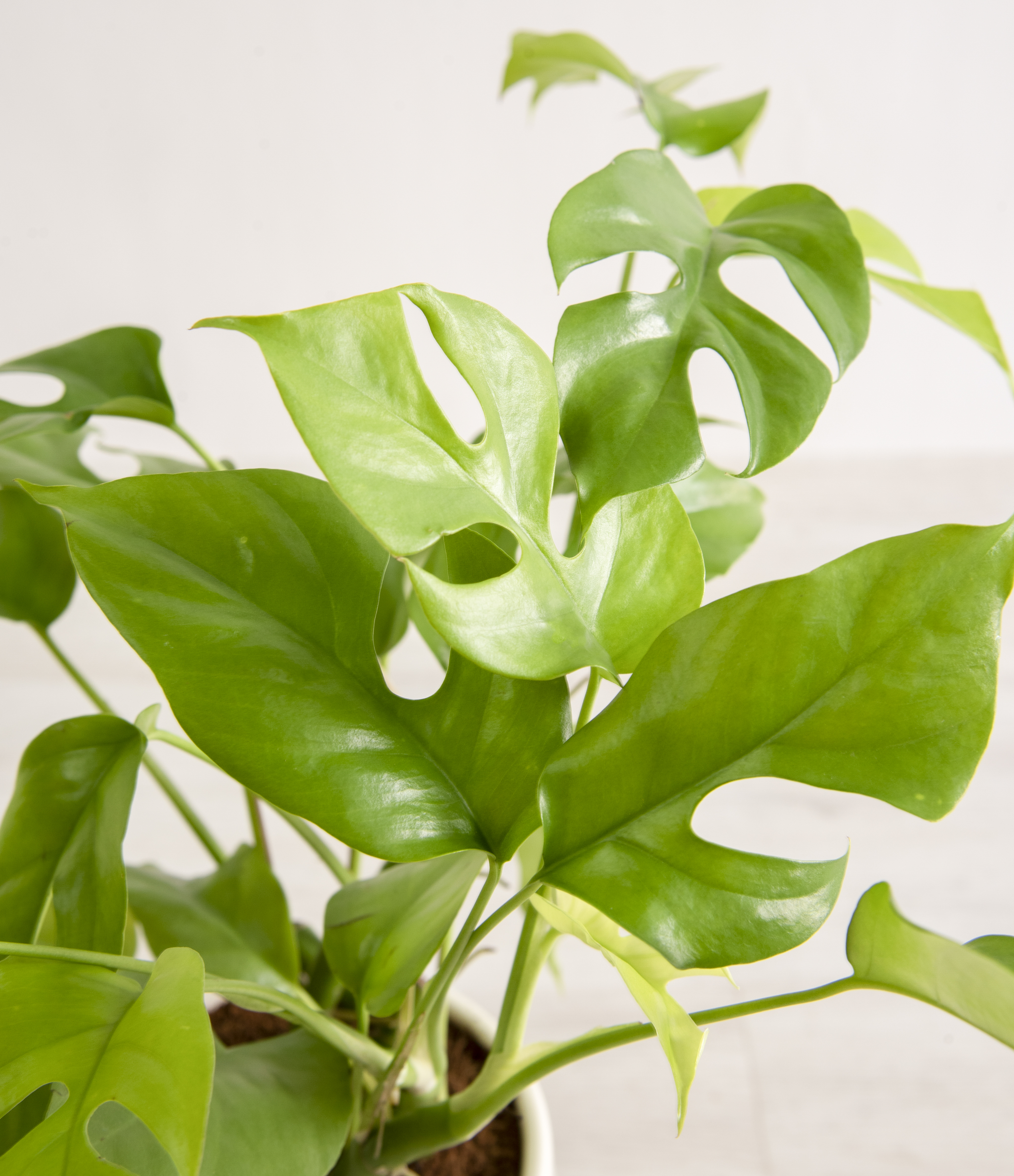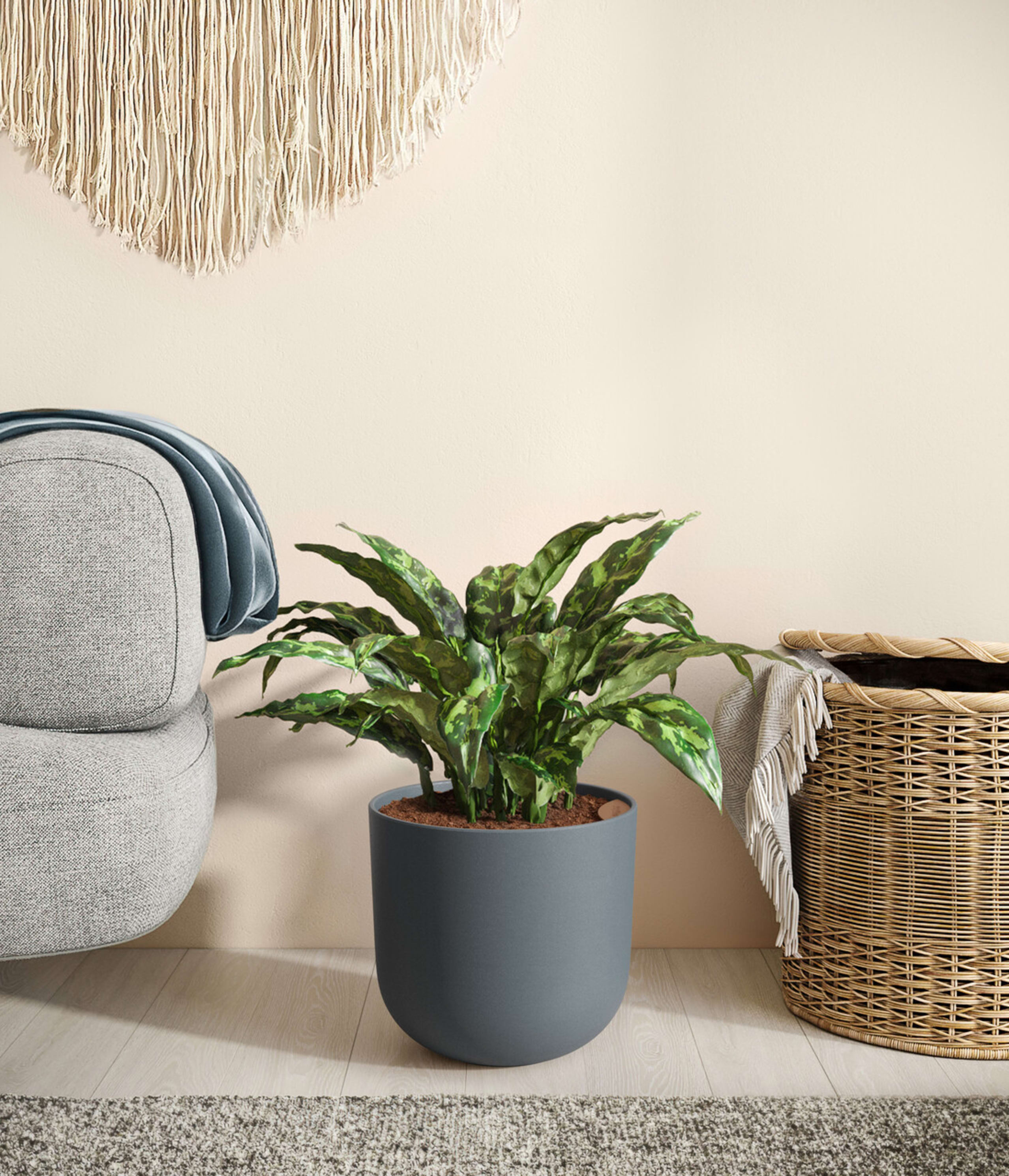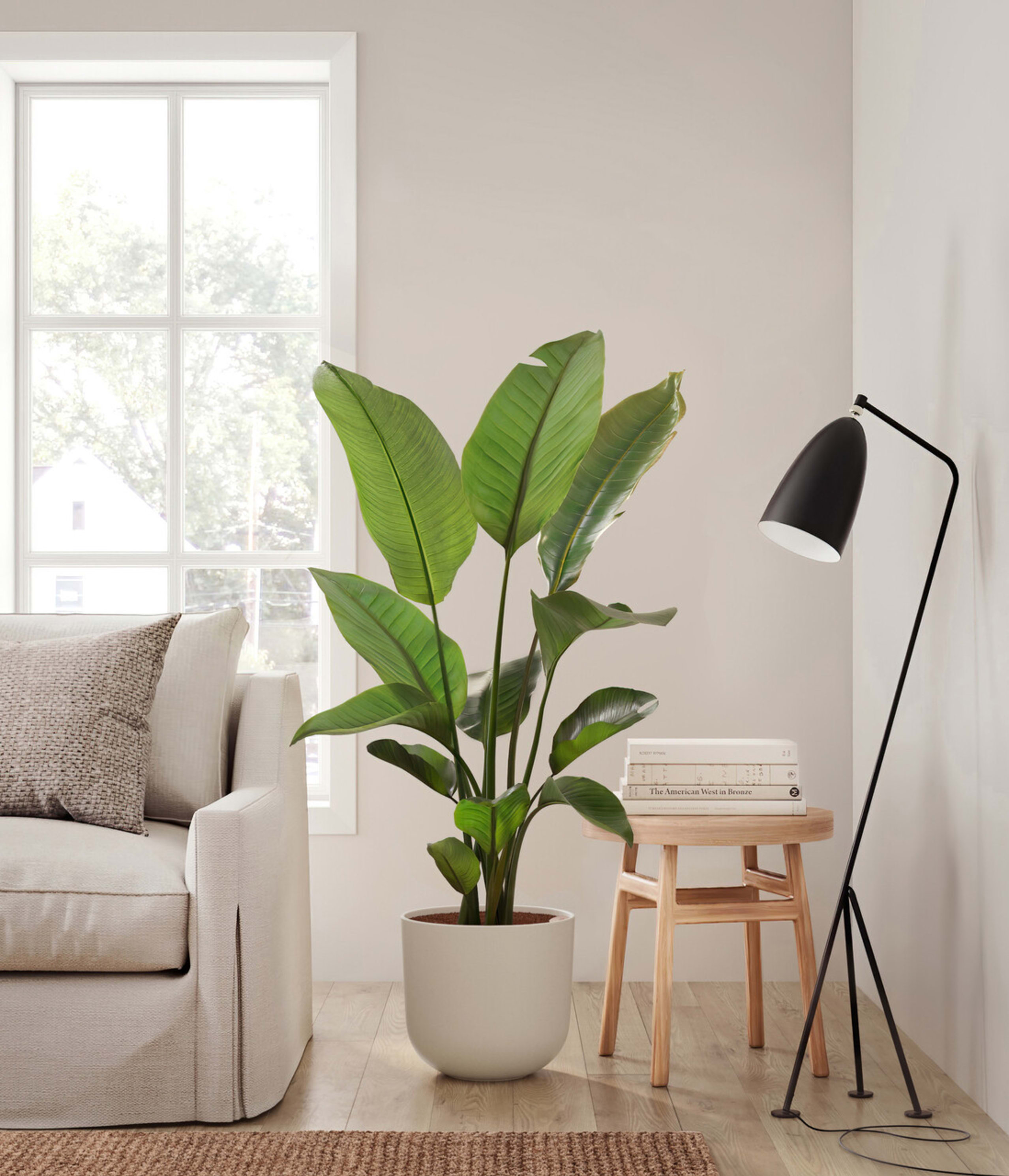Plant care library / Rhaphidophora Tetrasperma
How to care for Rhaphidophora Tetrasperma
About Rhaphidophora Tetrasperma
A rare viney plant sprouting vibrant split foliage, the Rhaphidophora Tetrasperma is known as the “mini monstera plant” for its similarly magnificent leaf shape. The plant can effortlessly trail or climb as it grows, giving your wall ultimate radiance and life.
The Rhaphidophora Tetrasperma is potted in a premium quality self-watering pot with a soft matte finish, which perfectly complements the plant’s striking beauty. Native to southern Thailand and Malaysia, the exquisite plant can reach up to 12 feet tall.
Other common names
- Mini Monstera
- Philodendron "Ginny"
- Philodendron "Piccolo"
- Ginny Monstera
- Mini Split-leaf
How Often Should I Water My Rhaphidophora Tetrasperma
With easyplant, watering your Rhaphidophora Tetrasperma is simple. Make sure to check the easyplant reservoir once a month and fill it when empty, and you're all set!
Without an easyplant pot, when the weather is warm and humid, you should water your Rhaphidophora Tetrasperma on a weekly basis for optimal growth. During winter months, when the climate is colder and drier, only moisten its soil if it has completely dried out. When watering manually, Make sure to give your plant slow yet steady pours of water so that any excess liquid can easily drain through its pot's bottom hole. Rhaphidophora Tetrasperma is sensitive to overwatering, so it's best not to water it again until the top layer of soil feels dry to the touch. To test for moisture levels in the soil, insert your finger at least 1 inch into the soil and feel how damp it is.
Rhaphidophora Tetrasperma Light Needs
Rhaphidophora Tetrasperma grows best in a space with bright direct light, where the sunlight streams inside directly, and can also adapt to spaces with bright indirect light, where the sun rays are diffused. Avoid placing it in spaces with medium to low light or spaces without natural sunlight.
Placing your Rhaphidophora Tetrasperma in front of an east or west-facing window is optimal, but they can also thrive with south-facing light as long as you diffuse it. Bright direct or indirect light will help your Rhaphidophora Tetrasperma stay healthy and green. If the desired sunlight isn't available to you, don't worry; these beauties grow exceptionally well under LED lighting too.
Rhaphidophora Tetrasperma Plant Care
If you're looking for an easy vining plant to care for, the Rhaphidophora Tetrasperma is an excellent choice. The plant grows best when exposed to several hours of bright, indirect light daily. To help it grow optimally and evenly, occasionally dust the leaves and rotate the pot by a ¼ turn once a month. To maintain its unique structure, you may want to periodically prune the new growth tips with a sharp, sterilized blade.
How Big Do Rhaphidophora Tetrasperma Plants Grow?
The Rhaphidophora Tetrasperma is known as a fast-growing plant, and under the right conditions, it can grow up to 2 feet a year! With the proper amount of bright light, this stunning plant can reach up to 8 feet tall indoors. In its natural environment, tropical areas in Asia and Africa, the Rhaphidophora Tetrasperma can grow up to 20 feet tall.
For a Rhaphidophora tetrasperma plant to reach its maximum potential, it needs an even and consistent level of moisture. This species can take up to four years to mature, so provide the right environment and nutrition it requires for full growth.
Temperature & Humidity
For optimal growth, Rhaphidophora tetrasperma should be kept away from low-light situations as this would slow down the rate of its leafy foliage. The ideal temperature for it to thrive is between 55-85 degrees Fahrenheit; However, slightly cooler temperatures are tolerated by this plant.
Rhaphidophora Tetrasperma thrives as a houseplant in humid climates, as its temperature and humidity range are both found in most homes. Rhaphidophora tetrasperma prefers humidity levels of at least 50-60%. To maintain this desirable moisture level near the plant, you can place it on a pebble tray with water or use a humidifier.
Are Rhaphidophora Tetrasperma Toxic for Pets & Kids?
While absolutely radiant, the Rhaphidophora Tetrasperma contains insoluble calcium oxalates that can be toxic and harmful if ingested. The plant can cause skin irritation, oral irritation, swelling, and difficulty swallowing. So, be sure to keep it away from curious children and pets.
Rhaphidophora tetrasperma plants contain a minute particle known as calcium oxalate, which serves to deter animals and insects from eating the leaves and vines. Regrettably, this same calcium oxalate can be toxic for cats, dogs, or other animals when ingested, leading to an array of unpleasant symptoms such as nausea, salivation, pawing at the mouth region, swollen lips, and general fatigue.
Troubleshooting Common Problems with Rhaphidophora Tetrasperma
Rhaphidophora Tetrasperma plants are known as easy to grow indoors and generally have few issues. That being said, if you notice the leaves turning yellow, it may be a sign that the plant is lacking light. In that case, try moving the Rhaphidophora Tetrasperma to a brighter location to see if this improves the issue.
Additionally, if you see the leaves starting to brown and crisp, it could be due to a lack of moisture, so you should increase the humidity (move it to a more humid spot or place it near a humidifier.)
Frequently Asked Questions about Rhaphidophora Tetrasperma Plant
- Is Rhaphidophora tetrasperma a rare plant?Rhaphidophora tetrasperma is considered to be a rare plant, as it is native to the tropical forests of Thailand and Malaysia. Its unique foliage and rarity make it a popular choice for houseplant enthusiasts, though it isn't typically found in stores or small nurseries.
- How toxic is Rhaphidophora tetrasperma?Rhaphidophora tetrasperma is moderately toxic to cats, dogs, and other animals. Small ingestions of the plant can cause significant symptoms, such as nausea, salivation, and pawing at the mouth region. It's best to keep it away from curious children and pets.
- Is Rhaphidophora tetrasperma easy to care for?Rhaphidophora tetrasperma is relatively easy to care for. As long as it is kept in a warm and humid environment (55-85 degrees Fahrenheit with 50-60% humidity) and gets adequate light, the plant should thrive indoors.
- Do Rhaphidophora tetrasperma like small pots?Rhaphidophora tetrasperma plants aren't particularly fussy about the size of their pots. Although they may appreciate having more room in larger pots to grow, they can tolerate being a bit root-bound and still thrive in smaller pots over time.

 Small Plants
Small Plants Medium Plants
Medium Plants Plants Collections
Plants Collections Large Plants
Large Plants Huge Plants
Huge Plants